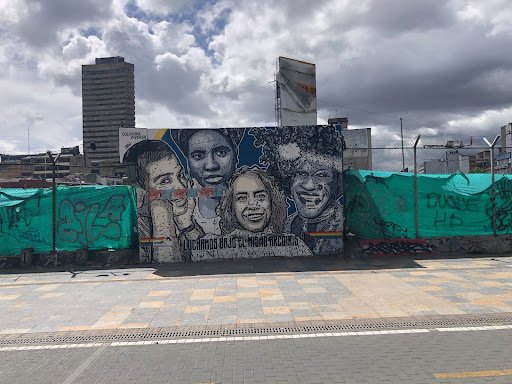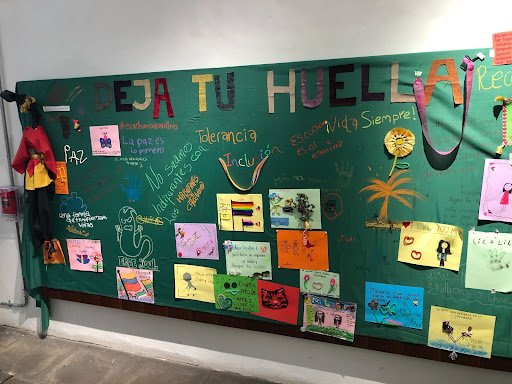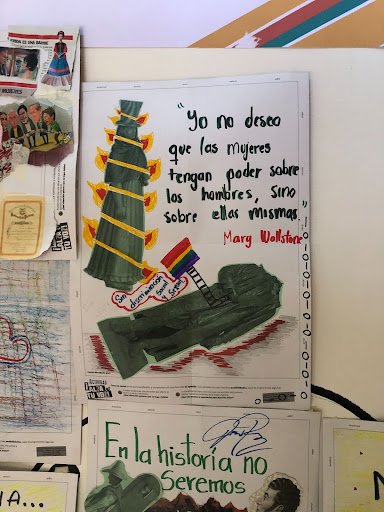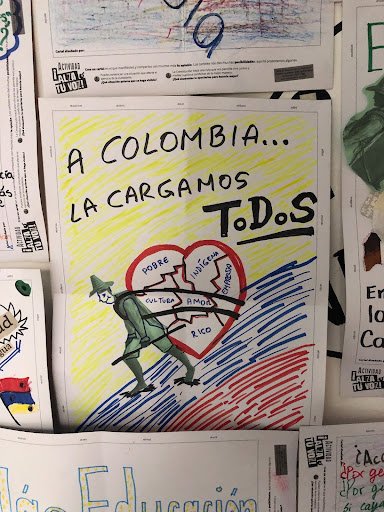By: Jordan Campbell
When stepping into another culture, I always challenge myself to contextualize the sociopolitical issues facing the people in that place. Stopping short of inserting my own views on the issues, I strive to listen louder than I speak. Some of the most important growth in my thirty years of life have come from experiences outside the United States. For me, it’s always about context, context, context. I will never fully grasp the issues facing other cultures I am not a part of, but I can certainly try to weave together an appreciation and an empathetic perception. If you really pay attention, listen closely, and dig deeper to place yourself in the context of what is going on, you can expand your capacity to empathize and build an authentic global understanding. This is especially true when viewing local issues through art.
Art exhibits and performances in countries other than my home nation, especially those that question the dominant narrative or buck the cultural norm, have done more than inspire me to cultivate a deeper understanding of other cultures - these artistic representations of current issues have often encouraged me to rethink certain aspects within my own life. In fact, they have been some of the best lessons in unlearning.
Understanding Colombia in this Moment
Looking from the outside-in to examine a culture sometimes feels similar to an author writing a destination travel guide; when I travel, I do everything I can to build an itinerary that includes as many unique, authentic, and off-the-beaten-path experiences as possible. This was no different during my recent travels in Bogotá, the bustling capital of Colombia. The South American nation has seen several social and political changes over the past several decades, especially the eradication of the notorious narcos drug trade that plagued the central government and left more than 40,000 Colombians dead. Along with those changes, Colombia has wrestled with its national identity, welcomed an influx of Venezuelan refugees, and essentially silenced an increasingly persecuted indigenous population. In the summer and early fall of 2021, largely peaceful protests filled the streets of Bogotá on issues ranging from healthcare policy and inequality to poverty and state violence. The nation has made major strides in recent decades, but still has several developmental and human rights issues to address. From my conversations with young adults while visiting, it seems the wave of change is coming - it’s only a matter of time. They are more progressive, more open-minded, and more socially conscious than their parents and grandparents.
When I arrived, the protests had subsided, but much of the protest art remained. Across the city - in both the fresh graffiti murals on buildings as well as the government-sanctioned exhibits in national cultural centers - I found moving art that questioned the status quo and pushed the boundaries. Below, I share some of those beautiful works that I witnessed in the streets and in the museums. Each Spanish phrase has been translated to the closest English meaning. The words these young people came up with, as well as their visual representations, are hauntingly profound. I was moved by their eloquence and boldness. For a nation that still struggles with LGBTQ+ protections and is generally conservative on the issue, I was particularly drawn to the pieces that address equality.
Mural caption: “Luchamos bajo el miso arcoiris” (“We fight under the same rainbow”).
An exhibit of youth art in the Museo Nacional de Colombia entitled #198AñosContigo, celebrating 198 years of Colombia while encouraging youth to envision the future of their nation.
Where Unlearning Fits In
Okay, so what does all this have to do with unlearning? This is where my real “aha” moment came into the picture. I knew that, perhaps even before arriving in Colombia, I would be writing a blog based on “unlearning” as it aligns with our mission at Creative Generation and was selected as this month’s blog topic. However, what I didn’t know was that I would have a profound connective moment between the art I was seeing and the concept of unlearning. It hit me on day three of my month-long trip, while I was looking at the youth art hanging in the Museo Nacional de Colombia. It wasn’t the great works of famed artist Fernando Botero that hit me like a ton of bricks (but I’d just like to note that I am a huge Botero fan and certainly enjoyed his works in the Museo Botero). No, it was the artwork of local youth - drawn and collaged and pasted on white printer paper using markers and glue sticks - that awakened me to this connection. The YOUNG PEOPLE! It was the youth that were doing the unlearning in Colombia. THEY were leading the charge. THEY were envisioning the Colombia they wanted in the future. Young people were pushing for reforms and had made considerable progress on pushing the government to make change during the summer’s protests. As usual, youth - especially youth who were wielding their paintbrushes and spray cans and megaphones to change minds and policies - were helping Colombian society unlearn the aspects of their culture that didn’t serve the greater good. Wow.
Stepping Back
There is a really important piece to this realization that can’t be missed: for me, it took being on the outside looking in to understand this type of unlearning in a different way. I really believe it appeared to me in a different light than youth-led protests within the United States, because they are - quite literally - so close to home. Too visceral to look at through a telescope and examine from a distance. Too personal and emotional to step back and understand it the way an investigative journalist might. That mental and emotional space helped to contextualize the Colombian issues in my mind in a way that felt less emotionally-driven and more like - “yeah, of course the youth are leading. Of course their art is profound and constructively disruptive.” However, here’s where my own personal challenge came into play.
If I was so willing to validate these young people for bucking the system and seeing things in such a refreshing light, despite what they had been raised to believe, why couldn’t I? Why not think about my own worldview and start unlearning the junk that doesn’t serve me? I thought to myself. What parts of our culture do we accept as “unchangeable” instead of choosing to unlearn them? Where do we need to dig deeper, push harder, and interrogate our own beliefs? The thoughts started racing in my head, and became stronger convictions the more I pondered them. I have begun to incorporate these thoughts into my daily life, regularly asking myself: is this something that needs to be unlearned?
Following the Lead of Youth
We are all on a journey of learning and unlearning. I’ve always heard that it’s more difficult to re-teach a student a concept once they’ve learned it incorrectly - and I think the same is true for unlearning. We are creatures of habit, and must make a deliberate effort to do this type of work. Who will lead the charge? If Colombia is any indication, it’s the youth who will continue to push global societies to unlearn. Just as it was here in the United States and around the world during the Black Lives Matter summer protests of 2020, youth are the catalysts for unlearning - and often, art is their medium. One of my favorite concepts that I gleaned from this experience is the idea of Deja Tu Huella. In Latin American cultures, this phrase embraces the action of pushing boundaries with your unique individuality and translates to “leave your mark” in English. One of the youth art exhibits I witnessed was entitled Deja Tu Huella and featured youth contributions of what they hoped to see in Colombia’s future - perhaps their own contributions to the betterment of society. I love the specificity and action-oriented nature of this phrase, and it seems to be fairly embedded in the fabric of Latin American cultures. What could be more profound than doing the hard work of unlearning and passing that on, thereby leaving your mark for the greater wellbeing of society?
I think we can all learn something from these Colombian young people - and then, we should follow their lead by doing some serious unlearning of our own.
An exhibit of youth art in the Museo Nacional de Colombia. In Latino culture, there is a phrase that embraces the action of pushing boundaries with your unique individuality: deja tu huella, which translates to “leave your mark” in English.
“No se trasa de ser todas iguales sino aprender a respetar las differencias” (“It is not about being all the same but learning to respect differences”)
“Yo no deseo que las mujeres tengan poder sobre los hombres, sino sobre ellas mismas.”
(“I do not want women to have power over men, but over themselves.” -Mary Wollstonecraft)
“A Colombia… la cargamos todos” (“To Colombia… we all carry it”)
The sketch depicts a man carrying a broken heart in which the individual pieces represent the artist’s perception of disparate but interwoven pieces of society: “pobre, indigena, cultura, amor, rico, empresa” (“poor, indigenous, culture, love, rich, company”).
-
Campbell, J. (2021, October 28). Learning Unlearning: Deja Tu Huella: Youth Art and Unlearning in Colombia. Creative Generation Blog. Creative Generation. Retrieved from https://www.creative-generation.org/blogs/learning-unlearning-deja-tu-huella-youth-art-and-unlearning-in-colombia






